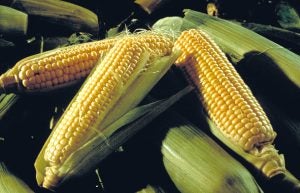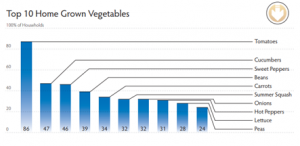When your mother told you that you had to eat vegetables to grow big and strong, you probably thought about broccoli, carrots, squash, maybe even tomatoes. But did you know, only two of those are actual vegetables? The others are fruits!
Plants are a funny thing, and we treat them differently in the world of botany than we do in day-to-day life. Every plant has three essential parts: roots, stems, and leaves, all of which can be edible (although maybe not very tasty). Vegetables, botanically speaking, are any edible portions of these plant parts. For example, potatoes are the root/tuber of the plant, and therefore a vegetable. Celery is the stalk/stem of the plant, carrots are a root, lettuce and greens are the leaves, etc. But many other things we classify as “vegetables” are actually fruits!
Fruits have two features that set them apart from other foods: They come from a flower, and they contain seeds. Although a simple explanation of the botanical classification, it really shows just how many of the foods that we call vegetables are really fruits. Things like apples, oranges, watermelon, grapes, and berries, we already know as fruits; but squash, zucchini, pumpkin, cucumbers, peppers, avocados, even corn is a fruit! That’s right, each corn kernel is a one-seeded fruit!
So, if it’s really a fruit, why do we call them vegetables?

In your typical day-to-day life we call a lot things in the produce section vegetables, even though they’re really fruit plant parts. This is because we have adapted a common definition to the words fruit and vegetable when it comes to a shared activity: eating. In the kitchen, a vegetable is typically a savory flavored product, whereas fruit is something sweet. So along with your true, botanical vegetables, we call things like tomatoes, avocados, peppers, and squashes vegetables, since these all have savory flavors.
Adapting the definition of words is not a strange concept, we do it all the time to simplify life (for example, those flying quadcopters many farmers use hadn’t always fit the definition of “drone,” but they’ve come to be accepted as that). To the average person, botanical definitions don’t matter, especially since only 35 percent of American households grow food at home and visually see how certain plants are produced.
Something that always surprises people is the growth of a peanut plant, which flowers above ground but then buries into the ground to produce the pod and nuts. Botanically, peanuts are an underground fruit, but a vegetable in the kitchen since it is a savory flavor. In fact, most legumes, such as beans and peas, are fruits in the botanical world but vegetables in the kitchen.
Seven of the top 10 “vegetables” grown at home are actually fruits, can you pick them out?

Another term that differs in the botanical world versus day-to-day life is berries. A berry is a certain kind of fruit, it comes from a single ovary of an individual flower. Blueberries are a true berry, but raspberries, blackberries, and strawberries are not actual berries because their flowers have more than one ovary. Some true “berries” include bananas, watermelon, kiwi, peppers, tomatoes, and eggplant, among other fruits. Some of these produce names, like blackberry, came about long before science had a true definition of a berry, so the name stuck regardless of it not being a berry.
You see how this can be really confusing and why we may have simplified the commonly understood definition of vegetable, fruit, and berry in regards to how we eat the product.
Next time you’re in the produce section of your local grocery, see if you can determine what is a botanical fruit, vegetable, and berry!
Michelle Miller, the Farm Babe, is a farmer, public speaker and writer who has worked for years with row crops, beef cattle, and sheep. She believes education is key in bridging the gap between farmers and consumers.



